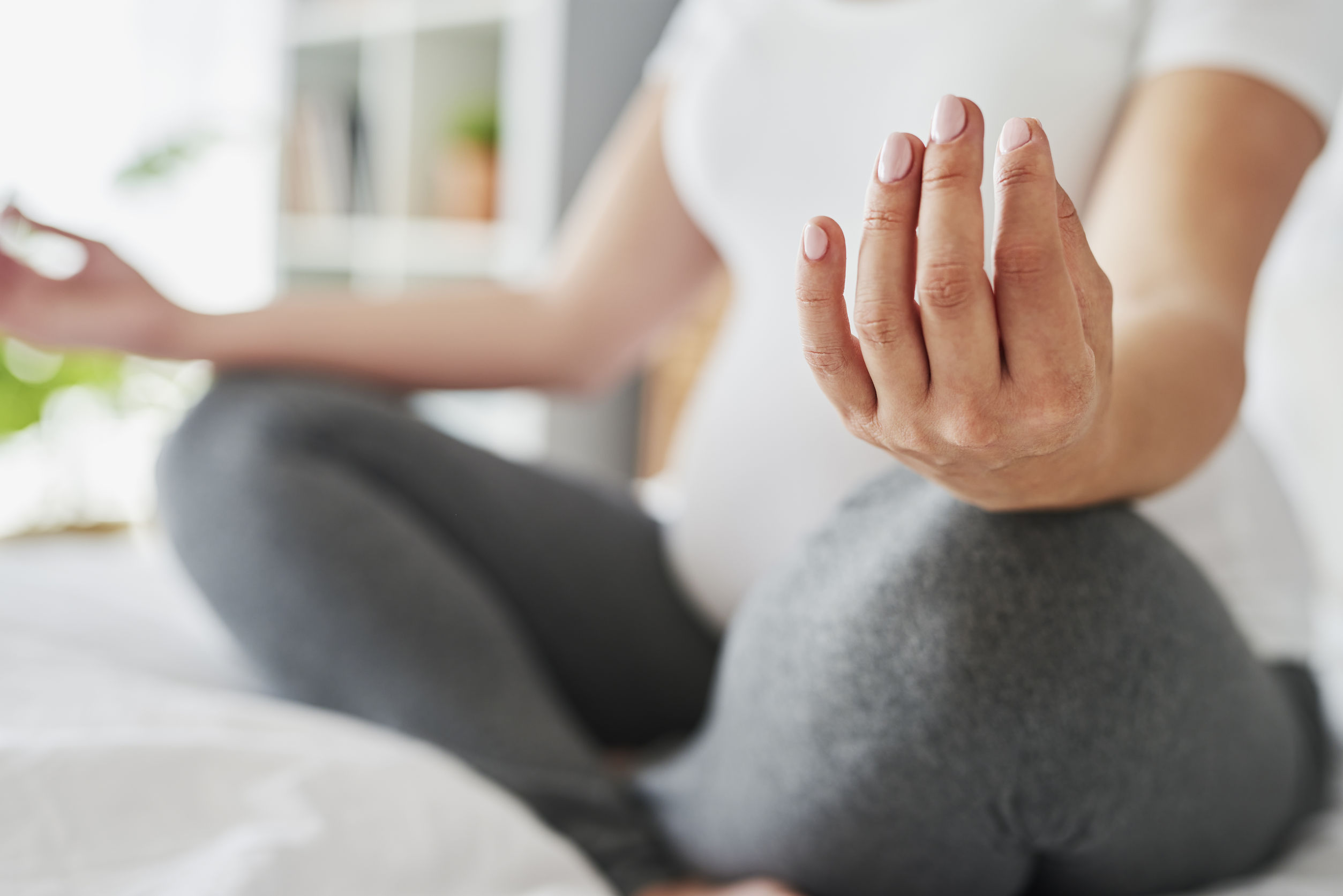”Michigan, how often do you do breath work? Breathing exercises are great ways to calm down, and ensure a better night's sleep. You can learn different breathing techniques in this week's article. Enjoy!
Reading Time: 10 Minutes
MWi Hacks:
- Find out 7 unique ways to explore breathing and relaxation
- Try a breathing exercise as part of your sleep routine and share your favorite one
MWi Summary:
- Breathing exercises can be a great way to help you relax for bedtime.
- You can read more about these exercises below:
- Abdominal breathing
- Repeating a mantra
- 4-7-8 breathing
- Body scan
- Counting while breathing
- Breathing imagery
- Visualization to release energy
Breathing exercises can be helpful to reduce stress and anxiety and help you to relax at bedtime. The following seven breathing exercises can all be done easily on your own to help encourage your body and mind to relax and make sleep easier.
Abdominal Breathing
Abdominal breathing refers to deep breathing into the abdomen rather than shallow breathing in the chest. The following steps will make sure that you are breathing from your diaphragm.
1. Lie down with your legs straight and slightly apart. Point your toes outward, put your arms at your side gently, make sure your palms are facing up, and close your eyes.
2. Place one hand on your stomach and the other on your chest.
3. Notice which hand rises the most as you inhale.
4. If the hand on your chest rises the most as you inhale, focus on filling your stomach (bottom of your lungs) full of air before you reach the top. The easy way to do this is to try and force your abdomen to rise as you breathe. Over time, this gets easier.
As you breathe, be sure to inhale through your nose and then exhale through your mouth. Keep your face relaxed as you do this. Breathe in and out while counting to make sure that you are breathing slowly. Relax and focus on the sound of your breath.
Continue breathing like this for a period of time such as 5 or 10 minutes. Practice this type of breathing regularly, such as once a day.
Once you’ve become better at engaging in deep abdominal breathing, practice it when you find yourself becoming anxious or tense.
This type of breathing is useful in that it helps to slow down the various functions in your body that can keep you tense and anxious. Allowing yourself to deep breathe will slow your heart rate and make it easier to drift off to sleep.
Repeating a Mantra
Once you have mastered the art of abdominal breathing, you can add in a mantra that helps you to focus on the relaxation aspect of your breath. Follow the steps below to add in a mantra while you breathe.
1. Lie down and get comfortable or sit in a relaxing position.
2. As you breathe deeply through to your abdomen, say a phrase to yourself in your head such as “Inhale relaxation.”
3. Then, as you breathe out and release the air from your abdomen, say “Exhale tension.”
Be sure to pause before you exhale and before you inhale. As you exhale, become aware of any tension in your body and let it go.
You can even use your imagination to picture your body accepting relaxation and letting go of tension. Picture these experiences as visual events such as air moving in and out of your body.
Continue doing this for 5 to 10 minutes until you start to feel sleepy.
4-7-8 Breathing Routine
The 4-7-8 breathing exercise is another way to relax so that you can fall asleep. Follow the steps below to practice this type of breathing.
1. Sit with your back straight.
2. Place the tip of your tongue behind your upper front teeth and keep it there.
3. Exhale through your mouth and make a “whooshing” sound.
4. Close your mouth and inhale in through your nose to a count of four.
5. Hold this breath and count to seven.
6. Then, exhale out through your mouth while making the same “whoosh” sound and count to eight.
9. If you complete this cycle, you have done one breath. Now go back and do this again three more times so that you have completed the cycle for four breaths in total.
It’s important to note that when you breathe like this, you should inhale quietly but exhale while making a nose. Keep your tongue in the same spot throughout the whole exercise. Make sure that you maintain the ratio of time for inhale/holding/exhale as this is what is most important.
If you want to do everything faster the first few times you do this (if you find holding your breath for this long is difficult), feel free to modify the time and work your way up as you get accustomed to the exercise.
Practice breathing like this twice a day (again, only do four breaths at a time). Do this consistently for one month. As you grow more confident you can extend to eight breaths.
Now, when you find yourself unable to sleep, practice your 4-7-8 breaths.
Body Scan
Have you heard of the body scan technique to help you relax and fall asleep? This technique involves scanning your body for signs of tension so that you can overcome them and fall asleep. Follow the steps below to practice this technique.
1. Lie down in bed and focus on relaxing as you exhale.
2. Feel the bed underneath you and how it is supporting you as you continue to exhale and relax.
3. Visualize each part of your body, starting at your head and moving through your whole body to look for spots that feel tense. As you move through your body, exhale, and focus on relaxing tense muscles.
4. After you’ve finished looking for tension throughout your body, focus on your exhales. As you exhale, repeat a mantra to yourself that helps to induce sleep such as simply the word “sleep” or another cue that helps you to start to drift off.
Follow this technique and you should find both your mind and body start to relax. Before you know it, you will be drifting off to sleep!
Counting While Breathing
Did you know that counting can help you to fall asleep? Follow the advice below to help you count your way to a better night’s sleep.
1. Lie down in bed, focus on exhaling your breath, and try your best to relax.
2. Feel the bed supporting you underneath as you exhale and relax.
3. Count from one to 10 and then backward from 10 to one, but pair the counts with your exhales.
4. Keep repeating this sequence until you fall asleep.
There are many variations on this counting breaths theme. For example, you could count backward from 99 to help you fall asleep. See what works best for you and practice it until you feel sleepy.
Breathing Imagery
Focusing on the rhythm of your breathing is another way to help you fall asleep. The following steps allow you to take advantage of becoming relaxed at bedtime.
1. Lie down in bed and start to focus on the relaxation that you feel as you exhale your breath.
2. Feel your bed supporting you as you step down into a relaxed state while you exhale.
3. As you become more relaxed, focus on your exhales and notice how you feel when you do them. Examples of sensations might include sinking into the bed, a feeling of things slowing down, a feeling of heaviness, or even sometimes feeling like you have more patience.
4. As you become relaxed, start to imagine that your breath is made up of colors. Watch as you breathe in and out and see those colors matching your breath. Don’t force anything or try to put your own box around it—just let yourself slip into the experience and see what comes up in your mind.
5. Focus only on your breath until you fall asleep.
It may sound simple, but imagery is a powerful way to relax and should always be considered helpful when you are engaging in breathing exercises to help yourself slow down before bed.
Visualization to Release Energy
When trying to fall asleep, it is helpful if you can practice exercises that help to relax both your mind and your body. This is a way to expel energy and prepare for sleep. Building upon the breathing imagery we already discussed, you can add in more visualization to help you relax. To practice this technique, follow the steps below.
1. Imagine that the worry, stress, or anxiety inside of you is a colored gas and is filling every corner of your body.
2. Imagine that as you exhale, this colored gas is being expelled from every part of your body and as it leaves, you start to relax. Imagine it moving from your lower body up through your torso and gathering in a ball ready to be expelled.
3. Imagine now that the same energy is being pulled from your head down into the ball of energy. Feel that calm has entered all areas where that energy has left.
4. Now, imagine that the ball of energy contains all of your negative energy like your anxiety and fear. Visualize it shooting out of the top of your head and up into the atmosphere like a shooting star.
5. Now, notice how you feel relaxed, calm, and ready to sleep.
The next time you find it hard to fall asleep, try practicing one of the above seven breathing exercises for better sleep. If you still struggle, considering visiting your doctor to see if there is an underlying cause of your insomnia or poor sleep.
MWi would like to thank Arlin Cuncic, for her expert insights that we were able to share with our community.
More on the Author:
Arlin has written about the struggles faced by those with social anxiety disorder (SAD) and the people in their lives since 2007. She has a keen understanding of the difficulties faced by those SAD and a desire to provide helpful up-to-date information on this topic.
She has worked in a variety of mental health and research settings in Ontario, Canada including the cognitive-behavioral therapy unit at the Centre for Addiction and Mental Health, Multi-Health Systems (a psychological test publisher) and the Thames Valley District School Board.
In addition to her self-help book, she is the founder of the website About Social Anxiety, which offers help to those with social anxiety including a cognitive-behavioral therapy (CBT) workbook.
Arlin holds a BA in psychology from the University of Western Ontario, London, Ontario, Canada and an MA in clinical psychology from York University, Toronto, Canada.





